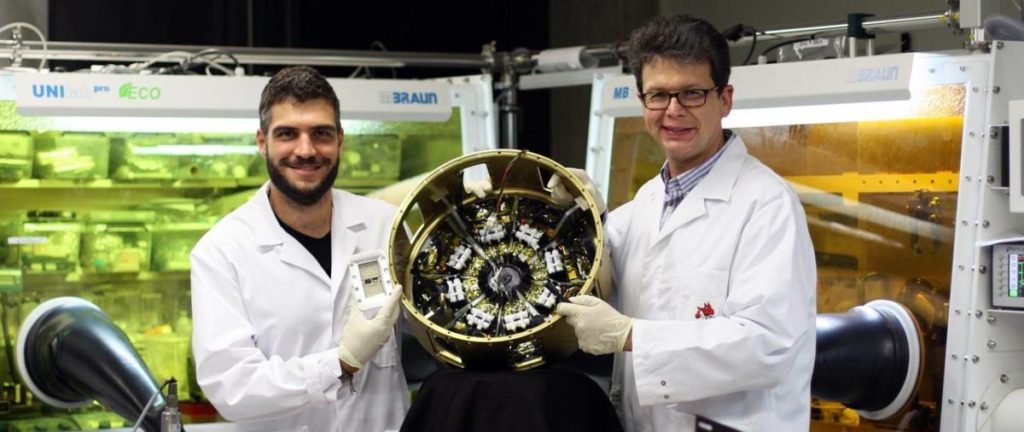Perovskites in space

Scientists led by the Technical University of Munich have packed a variety of perovskite and organic solar cells onto a rocket, and sent it into orbit 240 kilometers above the planet’s surface. Their results demonstrate strong potential for such technologies to power satellites and even deep space missions.

Satellites, high-flying drones and even longer range spacecraft commonly rely on solar panels to provide electricity when deployed far from any other energy source. Today, spacecraft engineers typically opt for gallium-arsenide or III-V cell technologies, with niche applications like space travel representing one of the few areas where such high efficiency, high cost technologies are viable.
While scientists work hard to bring the cost of these cells down to earth, other thin-film PV technologies, perovskites in particular, have gained impressive ground in recent years.
“The best perovskite solar cells currently achieve efficiency levels of 25 percent,” says Peter Müller-Buschbaum, professor of functional materials at the Technical University of Munich (TUM). “These thin solar cells, less than one micrometer thick, applied to ultra-thin, flexible synthetic sheet, are extremely lightweight. They can therefore produce nearly 30 watts per gram.”
In collaboration with the German Aerospace Center (DLR), scientists at the TUM attached four different types of thin film solar module to a rocket, and blasted them up outside of earth’s atmosphere. The modules were launched as part of the MAPHEUS 8 program at the European Space and Sounding Rocket Range in Kiruna, Sweden, and took a six minute round trip to an altitude of 239 km and back down to earth again.
“Our MAPHEUS program allows us rapidly to implement experiments in a zero-gravity environment, offering exciting research findings,” says Andreas Meyer, Head of the DLR Physics in Space program. “This time it went particularly quick: It took us less than a year to progress from the initial idea to the maiden flight of the solar cells as part of the MAPHEUS 8 program.”
The rocket was equipped with two lead-halide perovskite modules in different configurations, and two non-fullerene organic bulk heterojunction solar cells. Current-voltage characteristics of the cells were measured throughout the flight using a dedicated data acquisition system. Full details of the experiment can be found in the paper “Perovskite and Organic Solar Cells on a Rocket Flight,” recently published in Joule.
The results confirmed earlier research showing the lack of moisture and oxygen outside of Earth’s atmosphere is actually beneficial to perovskite cells, and that the cells could be more suitable for operation in space without any major changes. The group noted that there is huge potential for improvements in terms of stability and lifetime, and that proving the cell’s capability for long-term operation in space would be the next step for the research.
From: https://www.pv-magazine.com/2020/09/07/perovskites-in-space/

